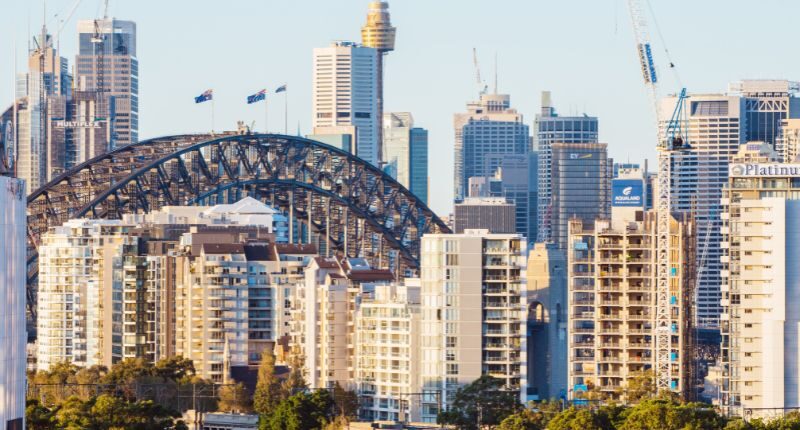- Sydney led the price rises for the capital cities
- Property price rises were not consistent across the nation
- Interest rates remain under the microscope
Property prices across Australia may have bottomed out with the latest from PropTrack’s Home Price Index indicating a slight price increase across March (+0.13%), and a cumulative increase of 0.49% in 2023, so far.
The report noted that the supply shortage continues to keep a floor under prices, with a host of other post-pandemic factors now adding fuel back into the property market, including a strong rebound in immigration, tight rental markets, and slowly increasing wages growth.
Interest rate pain perhaps close to ending
Tomorrow’s Reserve Bank of Australia (RBA) meeting will be closely observed by many, with the latest CPI indicators continuing to show signs of disinflation, and the peak likely in December last year.
PropTrack Senior Economist and report author Eleanor Creagh said that: “Despite the latest monthly inflation read providing further evidence inflation may have peaked in December and indicating cost pressures are easing as the tightening already pushed through is taking effect, inflation remains elevated and is well above the Reserve Bank’s 2-3% target range.
“Concerns around inflation expectations remaining anchored and the Board’s commitment to overcoming the challenge of high inflation make a 25-basis point lift next week more likely than not. But it’s a close call and the end of interest rate rises is in sight, whether the Reserve Bank pause this month or next.
Creagh also noted that some are speculating on an April rate pause, owing to a few factors including and linked to the lagged effect that rising rates have, and the mortgages that were fixed to Covid-low rates which are yet to see the full impact of the higher rates.
Price rises driven by the big smoke
While national home prices rose marginally for the month, PropTrack data showed a varied story across the nation’s capital cities. Hobart, Darwin and Brisbane all saw small declines, down 0.43%, 0.10% and 0.06% respectively.
Sydney led the charge for price rises at 0.27%, with Perth hot on the heels at 0.24%; Melbourne saw a smaller increase of 0.12%.
The report noted that buyer activity is indeed down, however as mentioned above, several factors are keeping prices from falling any further, with some uncertainty remaining with the full impact of rate rises yet to be seen.
| Region | Monthly growth (%) – All dwellings | Annual growth (%) – All dwellings | Median value ($) – All dwellings |
| National | 0.13 | -3.54 | 732,000 |
| Capital Cities | 0.16 | -4.48 | 783,000 |
| Regional Areas | 0.06 | -1.21 | 615,000 |
| Sydney | 0.27 | -6.03 | 994,000 |
| Rest of NSW | 0.16 | -2.37 | 708,000 |
| Melbourne | 0.12 | -5.79 | 789,000 |
| Rest of Vic. | -0.16 | -2.51 | 597,000 |
| Brisbane | -0.06 | -2.65 | 712,000 |
| Rest of Qld | 0.11 | 0.13 | 602,000 |
| Adelaide | 0.1 | 6.26 | 650,000 |
| Rest of SA | 0.22 | 10.87 | 381,000 |
| Perth | 0.24 | 3.23 | 565,000 |
| Rest of WA | -0.16 | 4.79 | 455,000 |
| Hobart | -0.43 | -5.16 | 680,000 |
| Rest of Tas. | -0.23 | -0.49 | 495,000 |
| Darwin | -0.1 | 0.21 | 492,000 |
| Rest of NT | 0.12 | 5.91 | 454,000 |
| ACT | 0.03 | -5.98 | 838,000 |
Source: PropTrack House Price Index April 2023.
It was a similar story in CoreLogic’s Home Value Index (HVI), with the numbers a little different.
February saw a virtually flat month, moving downward slightly 0.1%. CoreLogic’s HVI recorded a 0.6% rise in March, with Sydney also leading the charge, up 1.4%.
CoreLogic’s Research Director, Tim Lawless, put the rise down to a combination of low advertised stock levels, extremely tight rental conditions and additional demand from overseas migration.
“Although interest rates are high and there is an expectation the economy will slow through the year, it’s clear other factors are now placing upwards pressure on home prices,” Lawless said.
“Advertised supply has been below average since September last year, with capital city listing numbers ending March almost -20% below the previous five-year average. Purchasing activity has also fallen but not as much as available supply; capital city sales activity was estimated to be roughly -7% below the previous five-year average through the March quarter.
“With rental markets this tight, it’s likely we are seeing some spillover from renting into purchasing, although, with mortgage rates so high, not everyone who wants to buy will be able to qualify for a loan. Similarly, with net overseas migration at record levels and rising, there is a chance more permanent or long-term migrants who can afford to, will skip the rental phase and fast track a home purchase simply because they can’t find rental accommodation.”
Lawless said Sydney saw “… the largest drop from the market peak of any capital city market segment. We may be seeing some opportunistic buyers coming back into the market where prices have fallen the most.”








